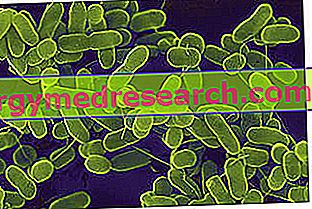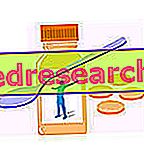By Dr. Danilo Bondi
In recent decades, the panorama of studies on the relationships between oxidative stress, wellness and sports performance has considerably expanded; before analyzing some aspects of this field it is however necessary to begin with two necessary explanatory premises.

A more appropriate definition could be "alteration in the redox signaling and control pathways", in which one already perceives how such alterations do not necessarily have to take on a negative meaning, but rather should be contextualized: we know in fact how they often take on a temporary and physiological character, and are basic to induce organic adaptations [1].
The other premise of terminology concerns the definition of chemical species capable of determining redox alterations: we speak of reactive species, most of which centered on oxygen (ROS) and on nitrogen (RNS); common use of the RONS acronym which includes both; free radicals are among the reactive species and are characterized by the presence of one or more unpaired electrons in the outer orbitals.
In sports, the most well-known radical RONS are superoxide (.O 2 ), hydroxyl (.OH) and nitric oxide (.NO), while hydrogen peroxide (H 2 O 2 ), singlet oxygen (1O 2 ) and peroxynitrite (ONOO-) as a combination of superoxide and nitric oxide.
In redox homeostasis the RONS are counterbalanced by antioxidant systems, both enzymatic and non-enzymatic: among the first we find for example superoxide dismutase (SOD), catalase (CAT) and complexes based on glutathione or thioredoxine, among the latter polyphenols, l albumin and vitamins A, C and E.
The redox environment inside a cell characterizes its life, as it directs its quiescence, proliferation, repair, protection, up to apoptosis and necrosis, although we still do not know precise levels of demarcation, for the redox indexes, between basal state, signaling phase and damage phase [2].
The RONS are undoubtedly at the center of numerous pathological investigations, as their role in the pathogenesis and / or course of various diseases is certain, including cancer, endothelial dysfunction, obesity, neurodegenerative diseases, muscular atrophy, aging sarcopenia, damage from ischemia - reperfusion [3, 4, 5, 6].
However, if the acute concentrations of RONS are tolerable, then the organism undergoes specific adaptations, both genetic [7] and agenico [8], and this is why continuous and rational exercise is able to provoke those supercompensations, in this case redox-mediated, that allow us to bear stimuli gradually increasing.
Again in relation to physical exercise, RONS act as mediators of vasodilation, regulate contractile function and insulin signaling [9].
With regard to acute effects, the presence of substantial alterations in the redox pathways can last even for a few days, if there is muscle damage (not intended as a clear lesion), with relative activation of neutrophils; the production of RONS during and after physical exercise does not end at the level of muscle fibers, but also involves platelets, leukocytes and erythrocytes [10, 11]; RONS also have an established role in relation to fatigue, especially in submaximal exercises [12].
Precisely because the redox-mediated system constitutes a physiological response and is a necessary stimulus towards different supercompensative adaptations, the question of antioxidant integration, which is often useless or even harmful [13], should not be underestimated: in fact, if on the one hand we must avoid running into the dreaded overtraining syndrome, on the other we must preserve the antioxidant potential of the physical exercise [14]; the situation is different if we are faced with nutritional deficiencies or excesses.
In summary, antioxidant supplementation may be useful in the case of special situations (for example in phases of heavy loading in the pre-season) [15] or in the presence of nutritional deficiencies, otherwise an adequate supply of vitamins and mineral salts remains best approach.
Bibliography
[1] Brigelius-Flohe R "Commentary: oxidative stress reconsidered" Genes Nutr 4: 161-163, 2009
[2] Powers SK, Jackson MJ "Exercise-Induced Oxidative Stress: Cellular Mechanisms and Impact on Muscle Force Production" Physiol Rev 88: 1243-1276, 2008
[3] Urso C and Caimi G "Oxidative stress and endothelial dysfunction" Minerva Med 102: 59-77, 201
[4] Vincent HK and Taylor AG "Biomarkers and potential mechanisms of obesity-induced oxidant stress in humans" International Journal of Obesity 30: 400–418, 2006
[5] ButterfieldA, PerluigiM, ReedT, MuharibT, HughesCP, Robinson RA, Sultana R "Redox proteomics in selcted neurodegenerative disorders: from its infancy to future applications" Antioxid redox signal. 2012 Jan 18
[6] Gomez-Cabrera MC, Snchis-Gomar F, Garcia-Valles R, Pareja-Galeano H, Gambini J, Borras C, Vina J "Mitochondria as sources and targets of cellular aging damage" Clin Chem Lab Med 50: 1287 -1295, 2012
[7] Brigelius-Flohé R and Flohé The "Basic principles and emerging concepts in the redox control of transcription factors" Antioxid Redox Signal 15: 2335-2381, 201
[8] Barbieri E and Sestili P "Reactive Oxygen Species in Skeletal Muscle Signaling" J Signal Transduct 2012
[9] Jackson MJ "Control of reactive oxygen species production in skeletal muscle contracting" Antioxid Redox Signal 15: 2477-2486, 201
[10] Levada-Pires AC, Fonseca CE, Hatanaka E, Alba-Loureiro T, D'Angelo A, Velhote FB, Curi R, Pithon-Curi TC “The effect of an adventure race on lymphocyte and neutrophil death” Eur J Appl Physiol 109: 447-453, 2010
[11] Ferrer MD, Tauler P, Sureda A, Tur JA, Pons A "Antioxidant regulatory mechanism in neutrophils and lymphocytes after intense exercise" J Sports Sci 27: 49-58, 2009
[12] Ferreira LF and Reid MB "Muscle-derived ROS and thiol regulation in muscle fatigue" J Appl Physiol 104: 853–860, 2008
[13] Teixeira VH, Valente HF, Casal SI, Marques AF, Moreira PA “Antioxidants do not prevent postexercise peroxidation and may delay muscle recovery” Med Sci Sports Exerc 41: 1752-60, 2009
[14] Ristow M, Zarse K, Oberbach A, Kloting N, Birringer M, Kiehntopf M, Stumvoll M, Kahn CR and Bluher M “Antioxidants prevent health promotion effects of physical exercise in humans” PNAS 106: 8665–8670, 2009
[15] Martinovic J, Dopsaj V, Kotur-Stevuljevic J, Dopsaj M, Vujovic A, Stefanovic A, Nesic G “Oxidative stress biomarker monitoring in elite women volleyball athletes during a 6-week training period” J Strength Cond Res 25: 1360 -137, 2011



